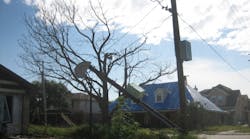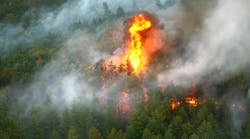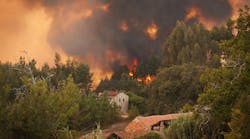There’s a concept in esoteric mysticism that we enter this physical plane multiple times to learn the lessons necessary to become an enlightened soul. If we don’t learn the necessary lessons, we get a “do over” as many times as it takes for us to get the point. You might recall this concept from Bill Murray’s Groundhog Day.
Now you may be wondering what this has to do with the electric utility industry.
Utilities and regulators alike would like to improve electric service reliability, public safety and substantially decrease storm damage and the risk of wildfires. I think we can safely assume the ratepayers would like the same.
I have to assume, based on the fact I can’t recall a year in the last ten when at least one utility and usually several have been investigated due to storm damage and/or ordered to provide a plan on how they are going to avoid similar levels of storm damage in the future, that the objective has not been achieved. No doubt a lot of progress has been made. Utilities are becoming masterful in emergency response. Yet the public, the politicians and consequently, often the regulators are not satisfied. If you work in this industry you probably suspect, as I do, that they won’t be satisfied as long as there is a need for an emergency response.
I don’t see any way to guarantee the elimination of all storm damage. It’s going to take a brighter mind than mine. However, a lot of storm damage is caused by trees. In fact, over a lot of the North American continent, based solely on media reports and discussions with industry peers, trees would appear to be responsible for the vast majority, often 80 to 90% of storm damage. How is this different from the myriad other challenges utilities have faced and solved?
What is standing in the way of finding a solution? Is it a lack of knowledge; a lack of will or both?
I think part of the reason is that the VM, forestry, line clearance or whatever you happen to call the group tasked with keeping trees out of power lines is the Rodney Dangerfield of utilities – that is they get “no respect.” That may sound like an audacious statement but let me put some questions to those of you who run distribution services. What is the biggest cause of unplanned interruptions? What is the biggest line item in your O&M budget? What group has the most face time with your customers? Are the answers pointing to your VM group? Then let’s ask what issues get the most: research funding; IT spend; financial analysis and management spend? If the answer is also the VM group I want to hear from you because maybe my perceptions are stuck in the past.
Are the other groups of the utility aligned to support the VM group? Is new construction reviewed by vegetation managers or is it creating an O&M liability that will have to be addressed by the VM group in the future? Do your outage cause codes inform the VM group? They need to distinguish between grow-ins and fall-ins; between trees within the right of way and outside the right of way; modes of failure such as uprooted, trunk failure and branch failure. Why? Because that will help them identify what actions will lead to improving reliability. Beyond that arborists need to investigate tree-caused faults to obtain information on species, more detail on mode of failure and whether the outage was preventable. Is the VM group resourced to undertake such action or is it something that is seen as ‘nice to have’ but OK if it spills off an overfull plate? Has the VM group been provided dedicated research funding? I’ve provided links to a number of papers below and you will see in them that this data is foundational to actionable outage mitigation strategies.
Following the links under the "Highlights" heading below you will find we have some good information on how trees cause outages, what trees cause outages and under what conditions. However, it is geographically limited because tree species, growth rates and habits, mortality, predominant modes of failure and weather events vary geographically. While some of the information gleaned from the work of a few utilities can be extended to utilities in general, if we are to rigorously decrease tree-caused service interruptions it will require the acquisition of local data.
If every utility were to dedicate 0.5% of their VM budget to research, where would we be in ten years? Could we break out of the eternal recurrence of storm investigations?


